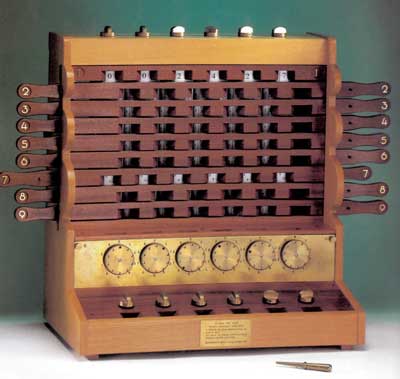
The history of computing dates back centuries, and many pioneers have made significant contributions to the field. Two such individuals are John Napier and Wilhelm Schickard, who were instrumental in the development of early computing devices.
John Napier, a Scottish mathematician, is best known for inventing logarithms, a mathematical concept that is widely used in modern computing. In 1614, he published a book titled “Mirifici logarithmorum canonis descriptio,” in which he introduced the concept of logarithms and explained their properties. Napier’s invention of logarithms made complex calculations much simpler and paved the way for the development of more sophisticated mathematical tools.
Wilhelm Schickard, a German astronomer and mathematician, is credited with designing the first known mechanical calculator. In 1623, he developed a device called the “calculating clock,” which used a series of gears and levers to perform addition, subtraction, multiplication, and division. Although only one example of the calculating clock has been discovered, it is considered a significant achievement in the history of computing.

Both Napier and Schickard made significant contributions to computing, but their work remained relatively unknown until the 19th century. It wasn’t until the development of more advanced computing devices, such as Charles Babbage’s analytical engine in the mid-1800s, that the importance of their work became widely recognized.
Today, their contributions to the field of computing are remembered and celebrated. The Napier constant, a mathematical constant that is used in logarithmic functions, is named after John Napier, and Schickard’s calculating clock is considered a valuable artefact and a testament to his innovative spirit.
In conclusion, the work of John Napier and Wilhelm Schickard laid the foundation for modern computing and helped pave the way for future technological advancements. Their contributions to the field of computing have stood the test of time and continue to inspire new generations of researchers and innovators.
Useful References:
- Corrado Petrucco, “The History of Computing Before Computers,” IEEE Annals of the History of Computing, vol. 27, no. 4, pp. 14-25, Oct.-Dec. 2005, doi: 10.1109/MAHC.2005.38.
- Ivor Grattan-Guinness, “The invention of logarithms by John Napier,” Notes and Records: The Royal Society Journal of the History of Science, vol. 63, no. 4, pp. 381-388, Dec. 2009, doi: 10.1098/rsnr.2009.0035.
- Peter Bisschop, “Wilhelm Schickard: A Sixteenth-Century Computer Pioneer,” IEEE Annals of the History of Computing, vol. 30, no. 2, pp. 57-65, Apr.-June 2008, doi: 10.1109/MAHC.2008.29.









